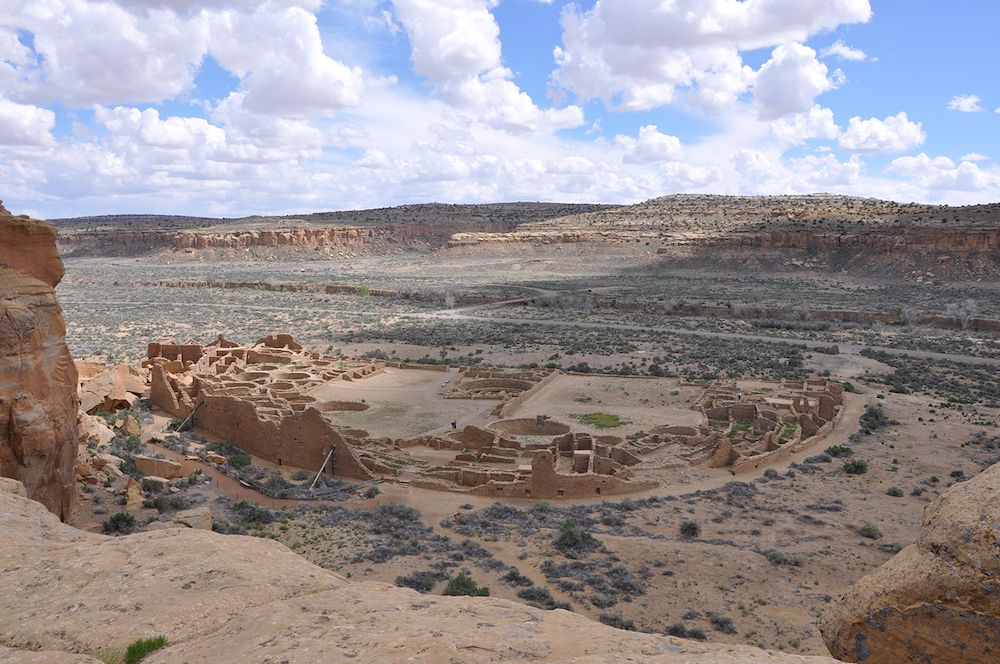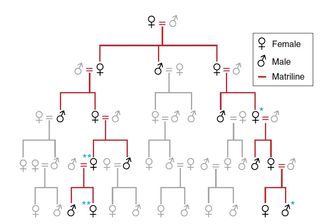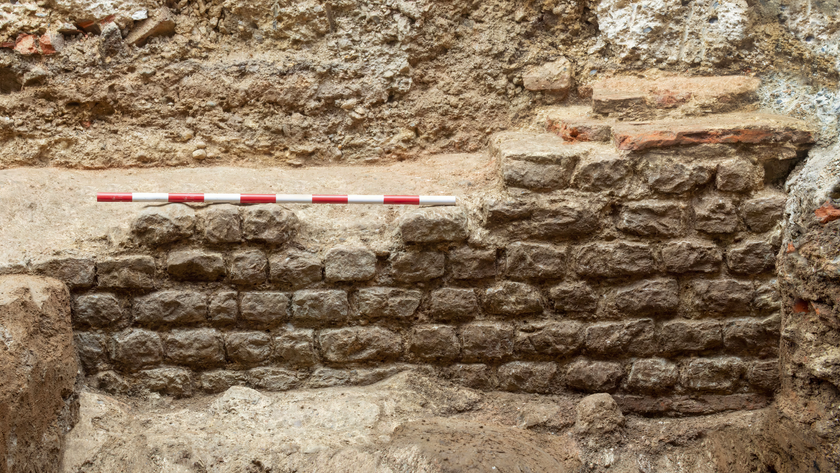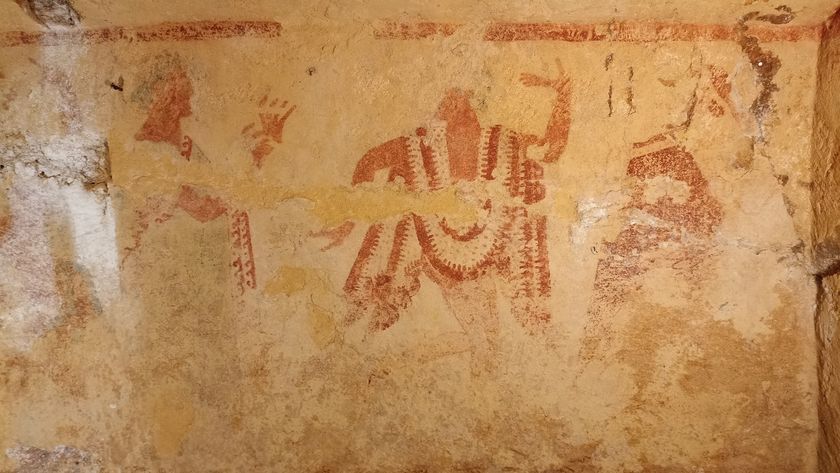Moms Rule! Excavation at Chaco Canyon Reveals Maternal Lineage

Hundreds of years before Christopher Columbus landed in the New World, a complex society in what is now New Mexico passed down power through its maternal line, a new study finds.
The finding is a remarkable one, as the ancestral Puebloan society at Chaco Canyon didn't leave a written record of its way of life. Rather, scientists made the discovery by analyzing the genomes of nine individuals who were buried in elaborate graves. The researchers found that all were related through a maternal line, according to the study.
Moreover, the matrilineal dynasty wasn't a short fluke; it lasted 330 years, from A.D. 800 to 1130, when the society collapsed, the scientists found. [See Photos of the Culture that Chose Rulers Based on the Mother's Line]
Researchers carried out the investigation on a crypt found in the Pueblo Bonito settlement, a multistoried masonry building, containing about 650 rooms, that archaeologists first excavated in 1896. Since then, researchers have wondered how the people at Pueblo Bonito governed themselves — that is, whether they had patrilineal or matrilineal dynasties, or if they chose leaders based on abilities and achievements.
Crypt query
To learn more, researchers analyzed what appeared to be elite individuals buried in a 6.5-by-6.5-foot (2 by 2 meters) crypt at Pueblo Bonito. Elaborate graves are rarely found among the ancient Pueblo cultures, but the two-layered crypt at Pueblo Bonito is a sight to behold, the researchers said.
Earlier work showed that the grandest grave in the crypt contained the remains of a man in his 40s who died from a lethal blow to the head. The man's body was found in the center of the room, adorned with more than 11,000 turquoise beads; 3,300 shell beads; and other artifacts, including several abalone shells from the Pacific Coast, making it "the richest burial known in the North American Southwest," the researchers wrote in the study.
Next to the man's body, the archaeologists found the grave of another individual, who was buried with about 5,800 turquoise pieces. A wooden floor covered both graves, and on top of them, archaeologists found the remains of 12 bodies of individuals thought to be the descendants of the people in the two elaborate graves.
Sign up for the Live Science daily newsletter now
Get the world’s most fascinating discoveries delivered straight to your inbox.
Researchers studied the genomes of nine individuals within the crypt to determine whether they were related, said study lead researcher Douglas Kennett, a professor of environmental archaeology and head of the Department of Anthropology at Pennsylvania State University.
"We used [a] unique combination [of] high-resolution radiocarbon dating in combination with state-of-the-art genomics technology to address these questions," Kennett told Live Science in an email.
The results showed that the nine people had identical mitochondrial DNA, genomic material that mothers pass down to their children, which indicated that the society had a matrilineal dynasty.

These results show that the Chaco ascribed to a popular form of government, as matrilineal systems are still present in the western Pueblos (Hopi, Zuni, Acoma and Laguna) and the Rio Grande Pueblos (Cochiti, San Felipe, Santo Domingo and Zia), the researchers wrote in the study.
What's more, Spanish colonial records and Pueblo oral traditions, mainly among the Hopi and Zuni, "emphasize matrilineal clans as the founding social units and matrilineal leaders as key protagonists in social history," the researchers wrote in the study. [Chaco Canyon Photos: The Center of an Ancient World]
Mothers and daughters
In addition, the researchers analyzed the individuals' regular DNA to look for familial relationships.
"Using DNA sequences from the nuclear genome combined with the radiocarbon dates, we identified a mother-daughter pair and a grandmother-grandson relationship," Kennett said in a statement.
The results reveal Pueblo Bonito's ruling structure, said study co-researcher Steve Plog, a professor of archaeology at the University of Virginia.
"For the first time, we're saying that one kinship group controlled Pueblo Bonito for more than 300 years," Plog said in the statement. "This is the best evidence of a social hierarchy in the ancient Southwest."
The study was published online today (Feb. 21) in the journal Nature Communications.
Original article on Live Science.

Laura is the archaeology and Life's Little Mysteries editor at Live Science. She also reports on general science, including paleontology. Her work has appeared in The New York Times, Scholastic, Popular Science and Spectrum, a site on autism research. She has won multiple awards from the Society of Professional Journalists and the Washington Newspaper Publishers Association for her reporting at a weekly newspaper near Seattle. Laura holds a bachelor's degree in English literature and psychology from Washington University in St. Louis and a master's degree in science writing from NYU.


